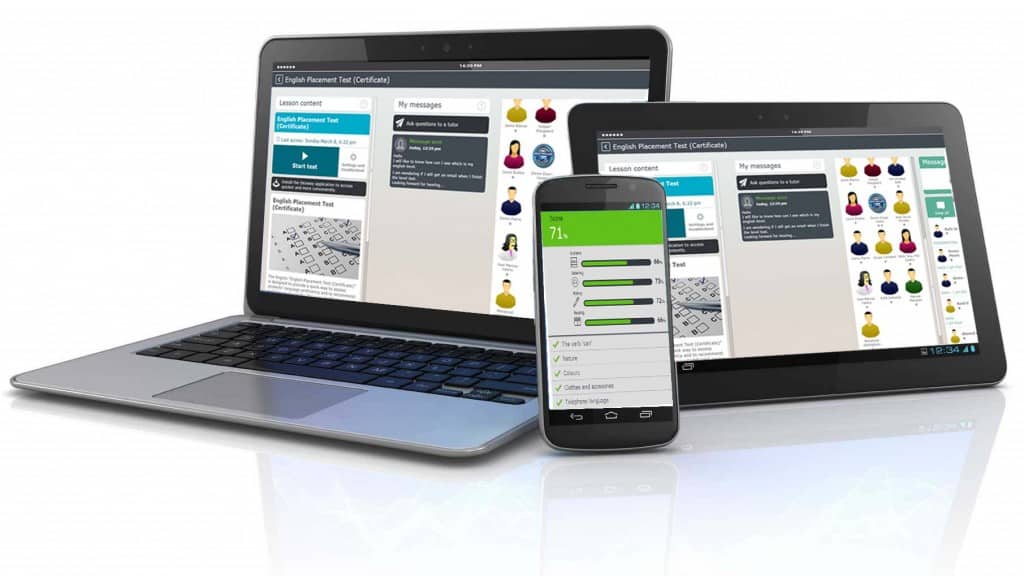One of the ways in which the digital revolution has surpassed expectations is the way digital technology has so quickly blossomed into multiple devices, making multi device learning possible. In a relatively short space of time we have moved from a society where people are just beginning to be able to access one internet-enabled device into a society where almost everyone has access to a variety of devices.
The type of these devices vary, but typically most adults have access to a desktop or laptop computer, a tablet and a smartphone. In many cases these devices can be duplicated when you consider that many professionals will have access to them both at work and at home.
With all this in mind, it pays for training organisations to carefully consider how they are engaging their students. It’s becoming more and more important for eLearning courses to be compatible with multi device learning. This is particularly key when you consider that many of us now access the internet far more frequently on a mobile device than we do via a laptop or computer. A UK study showed that people spend almost twice as much time browsing the internet on their smartphone than on any other device.
Not sure why multi device learning is so important? Here are five key ways that it can enhance the education experience.

#1. Multi device learning can make it easier for students to engage with course content
The easier you make it for your students to engage with eLearning content, the more likely it is that they’ll keep engaging. Many eLearning providers believe that providing multi device learning via a responsive tablet or smartphone application can help to reduce drop off rates.
When students have access to a learning app it makes it possible for them to quickly drop in and out of study time, no matter what other professional and personal commitments they have to contend with. A learning application can be used twenty four hours a day, seven days a week, with no restriction on geography.
#2. It can promote everyday learning
As our society has adapted to the growth of the digital world, we have become far more adept at processing the myriad of information that’s now available to us. Because of this, learning has become less of a thing that happens in specific educational spaces and more a practice that we embrace as part of our everyday lives.
A multi device app can encourage students to make learning a part of their everyday. It could also push them towards embracing new studies out of interest rather than out of necessity.
#3. It can make eCourses more digestible
The best kind of learning application is designed to offer users bite size pieces of information. The way that this type of app works is to offer new learning opportunities in a ‘little and often’ format. This can make complex information much more digestible and easy to learn. This again can help to keep learners engaged and prevent them being overwhelmed by the scope of what’s available.
#4. It can invite more interaction
One of the greatest benefits of multi device learning is that it encourages far more student interaction than more traditional classroom based learning. Interaction is a huge benefit: the more your students are invited to interact, the more engaged they’re likely to be. A mobile app designed for learning will enable students to engage with their tutors and peers throughout their day, without the need to log in as they may have to do on a solely browser-based learning application.
#5. It can add an additional layer to face to face events
Multi device learning doesn’t have to be used to replace more traditional in-person learning experiences. Rather, this type of smartphone and tablet application can be used to enhance classroom interactions. By using an app in the classroom, tutors can host exciting and interactive activities while keeping track of how students are doing.
* * *
All these factors together make it clear that it’s now vital for both training organisations and students to carefully consider how multi device learning could work for them. A well designed smartphone and tablet application could be the difference between the success and failure of the learning experience.
Any training organisations who aren’t currently offering their students an app from which to access their course materials may want to think very carefully about doing this. After all, investing in this kind of technology now could help to future proof their training provision against coming expectations and technologies.
Want to know what a good smartphone learning application could offer? Dexway learning apps are available for Windows, Mac, Android, iOS and tablets. In addition to this multi device functionality, they can also be used with or without internet access. Take a look at what other features we have to offer here.
You may also find interesting:
- Language Labs and How They Have Changed with Online Language Courses
- Why Should You Study Languages Online Through an LMS?
- 6 Advantages of a Virtual Campus for Your Language School

